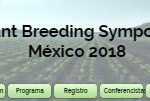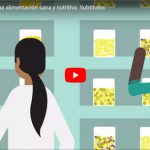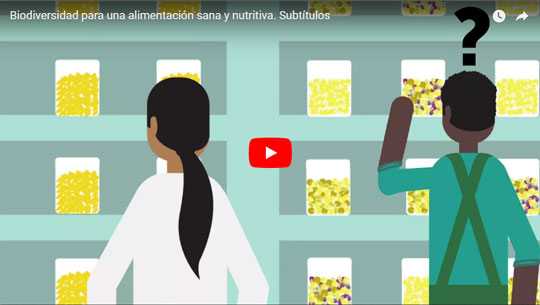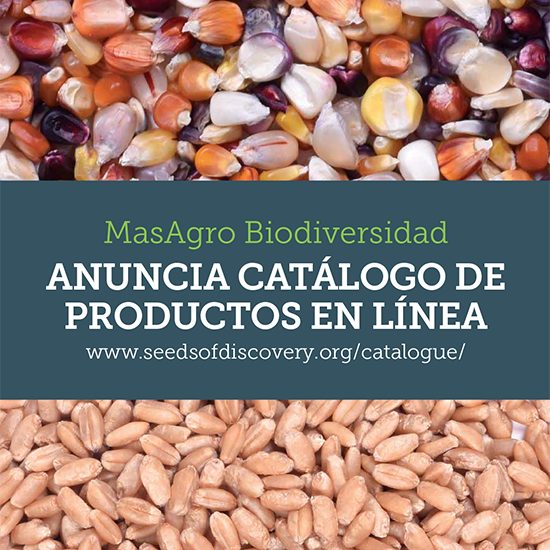Scientists point to potential genetic treasures in Mexico’s Creole wheats
By Mike Listman
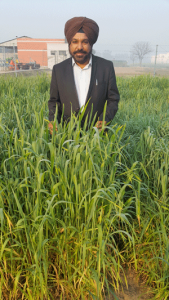
Sukhwinder Singh at a field of Punjab Agricultural University, India, with Mexican wheat landrace evaluation trial (foreground) and wheat lines derived from the landraces (background). Photo: Mike Listman
For the first time ever, a research team from China, India, Mexico, Uruguay, and the USA has genetically characterized a collection of 8,400 centuries-old Mexican wheat landraces adapted to varied and sometimes extreme conditions, offering a treasure trove of potential genes to combat wheat’s climate-vulnerability.
Reported today in Nature Scientific Reports and led by scientists from the Seeds of Discovery project (SeeD) at the Mexico-based International Maize and Wheat Improvement Center (CIMMYT), the study details critical genetic information about Mexican landraces for use in breeding to boost global wheat productivity.
This is essential, given the well-documented climate effects that imperil key wheat-growing areas, according to scientist Sukhwinder-Singh, SeeD wheat researcher at CIMMYT and corresponding author for the study.
“The landraces, known as Creole wheats, were brought to Mexico as early as the 16th Century,” said Sukhwinder-Singh, who also credited the study to MasAgro, a long-term rural development project between Mexico’s Ministry of agriculture and rural development (SADER) and CIMMYT. “Wheat is not native to Mexico, but this gave the Creoles time to toughen in zones where late-season temperatures can hit highs of 40 degrees Centigrade (104 degrees Fahrenheit).”
Heat can wreak havoc with wheat’s ability to produce plump, well-filled grains. Research has shown that wheat yields plummet 6 percent for each 1-degree-Centigrade rise in temperature, and that warming is already holding back yield gains in wheat-growing mega-regions such as South Asia, home to more than 300 million undernourished people and whose inhabitants consume over 100 million tons of wheat each year.
“Typically, massive seed collections constitute ‘black boxes’ that scientists have long believed to harbor useful diversity but whose treasures have remained scarcely utilized, mostly because we have limited information about them,” explains Prashant Vikram, CIMMYT scientist and first author of the report. “New technologies are helping us to shine a light in the dark corners. As part of MasAgro’s ‘Seeds of Discovery Component,’ the team used the latest genotyping-by-sequencing technology and created unique sets of the landrace collections that together capture nearly 90 percent of the rare gene variants, known as ‘alleles.’”
According to Kevin Pixley, director of the Seeds of Discovery project and CIMMYT’s genetic resources program, wheat scientists will be able to home in on groups of landraces from regions with conditions similar to those they presently target or will target in coming decades. “The next step is for breeders to identify seed samples and genes for their programs; say, alleles common to a set of landraces from a heat-stressed area, providing a valuable starting point to exploit this newly-revealed diversity.”
A pillar for global food security, wheat provides 20 percent of the protein and calories consumed worldwide and up to 50% in developing countries. A 2015 World Bank report showed that, without action, climate change would likely spark higher agricultural prices and threaten food security in the world’s poorer regions.
SeeD is a joint initiative of CIMMYT and the Mexican Ministry of agriculture and rural development (SADER) through the MasAgro project. SeeD receives additional funding from the CGIAR Research Programs on Maize (MAIZE CRP) and Wheat (WHEAT CRP), and from the UK’s Biotechnology and Biological Sciences Research Council (BBSRC). SeeD works to unlock the genetic potential of maize and wheat genetic resources by providing breeders with a toolkit that enables their more targeted use in the development of better varieties that address future challenges, including those from climate change and a growing population.
To read the full study, please click here:
This article was originally posted on www.cimmyt.org
Tags: CIMMYT, climate change, creole wheat, heat resisitance, MasAgro, Mexico, wheat

